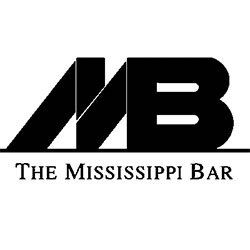PRACTICE AREAS
SUBSCRIBE TO OUR BLOG
SUBSCRIBE TO OUR BLOG
ASSOCIATIONS
Madison County Bar Association
Section 1983 and employment discrimination

Section 1983 and employment discrimination
Many employment discrimination claims fall under a federal law called Title VII. That law prohibits several types of discrimination and harassment in the workplace.
Today, we discuss that type of claim when made by a public employee under Section 1983 (which is short for 42 United States Code Section 1983).
As we wrote here , Section 1983, in and of itself, does not provide any particular rights. Instead, it is a vehicle for seeking damages for the violation of rights found elsewhere in the law.
On March 27, 2020, the United States Court of Appeals for the Fifth Circuit issued its opinion in Jones v. Hosemann. It doing so, it compared and contrasted employment claims under Title VII and Section 1983.
The facts of Jones
Jones, an African-American man, was denied a promotion by the Mississippi Secretary of State’s office.
He filed a complaint with the United States Equal Employment Opportunity Commission (“EEOC”). The EEOC found there was reasonable cause to believe that the Secretary of State’s office violated Title VII of the Civil Rights Act.
Within a couple months of the EEOC’s determination, someone reported that Jones violated the Secretary of State’s office policy by being in the building after hours.
An investigation ensued, and Jones was fired. He subsequently brought this suit.
In Jones’s complaint, he alleged that defendants Doug Davis, Kim Turner, and Carla Thornhill – – who were all employees in the Secretary of State’s office – – conspired, colluded, and collaborated to deny him the promotion.
Although Jones asserted several claims against a number of defendants, the one we look at today is his claim against Davis, Turner, and Thornhill.
Specifically, he alleged that those three individuals violated his Fourteenth Amendment rights by unconstitutionally discriminating against him based on his race. He filed his claim under Section 1983, asking for a remedy for that violation.
The district court made several rulings. The only one we address in this post was the ruling that allowed that Section 1983 claim to go forward.
Davis, Turner and Thornhill appeal
The Fifth Circuit began by noting that it examined Section 1983 discrimination claims made by public employees in a manner similar to claims made under Title VII.
“In doing so, we have stated that invidious discriminatory intent can be shown in the same way under § 1983 as under Title VII – – by either direct or circumstantial evidence.”
The Fifth Circuit noted that “both Jones and the district court proceeded on the assumption that his claim would be akin to a Title VII circumstantial evidence claim.”
To make such a claim, a plaintiff would need to show that he:
(1) was a member of a protected group;
(2) was qualified for his position;
(3) suffered an adverse employment action; and
(4) received less favorable treatment than similarly situated individuals outside of his protected group.
“So, proceeding on the assumption that Jones’s claim against the individual employees was just like a Title VII claim, the district court denied the employees’ motion to dismiss because Jones’s complaint contains allegations along these Title VII lines.”
The district court overlooked something, however.
Despite the fact that Title VII claims and Section 1983 claims such as the one Jones filed are analyzed similarly, there is an important distinction.
Title VII applies to employers. The Section 1983 claim that Jones filed, however, was against individuals.
For that reason, there was another element that Jones had to proved – – individual causation.
More specifically, “a plaintiff must plead that each Government-official defendant, through the official’s own individual actions, has violated the Constitution.”
Such a defendant cannot be held liable “unless they themselves acted on account of a constitutionally protected characteristic.”
So, “it is not enough for a plaintiff to simply allege that something unconstitutional happened to him. The plaintiff must plead that each defendant individually engaged in actions that caused the unconstitutional harm.”
This is where Jones loses.
In his Complaint, Jones stated that he interviewed for a promotion and “that he was not selected for the job.” But, he did not allege that the three individual employees were the ones who interviewed him, rejected him, or selected someone else for the job.
Jones also alleged that the only reason given for his non-selection was that he was not the “‘right fit.” But ,Jones did not claim that any of the three individual employees gave this allegedly false reason.
The allegation that the three individual employees “conspired, colluded, and collaborated to deny” him the promotion was just a “naked assertion of conspiracy” without “factual enhancement.”
Thus, Jones failed to adequately state a Section 1983 race-discrimination claim upon which relief could be granted.
If you think you have a legal issue involving discrimination against a public employee, give us a call and let us help.
Panter Law Firm, PLLC, 7736 Old Canton Road, Suite B, Madison, MS 39110
601-607-3156
The post Section 1983 and employment discrimination appeared first on Panter Law Firm, PLLC.








